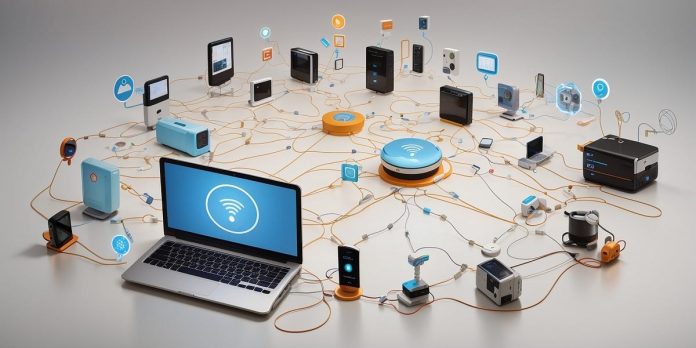The Internet of Things (IoT) is transforming everyday objects into smart devices capable of collecting, sharing, and acting on data. From smart home appliances to industrial sensors, IoT is creating a seamlessly connected world, enhancing efficiency and convenience.
What is IoT?
IoT refers to the network of physical devices embedded with sensors, software, and connectivity features. These devices can communicate with each other and central systems, enabling real-time monitoring, automation, and data-driven decision-making.
For example, a smart thermostat can learn a homeowner’s preferences and adjust temperature settings to optimize comfort and energy usage. In industrial settings, IoT sensors monitor equipment performance, predicting maintenance needs and reducing downtime.
Applications Across Sectors
IoT has found applications in numerous industries:
- Smart Homes: Devices like Amazon Echo and Google Nest allow users to control lighting, security, and appliances with voice commands or mobile apps.
- Healthcare: Wearable devices track vital signs and share data with healthcare providers, improving patient care and enabling remote monitoring.
- Agriculture: IoT sensors monitor soil moisture, weather conditions, and crop health, optimizing irrigation and increasing yields.
- Manufacturing: Industrial IoT (IIoT) systems enhance production efficiency through predictive maintenance and supply chain management.
Challenges and Security Concerns
While IoT offers immense potential, it also introduces risks. The sheer volume of interconnected devices creates vulnerabilities that can be exploited by cybercriminals. Protecting data privacy and securing IoT networks are critical to ensuring trust and adoption.
Standards and interoperability pose additional challenges. With various manufacturers producing IoT devices, ensuring seamless communication across platforms requires unified protocols and robust testing.
The Future of IoT
The integration of IoT with emerging technologies like 5G, AI, and edge computing will further amplify its impact. Smart cities, autonomous vehicles, and advanced healthcare solutions are just a glimpse of what’s possible in an IoT-driven world.
By enhancing connectivity and intelligence, the Internet of Things is not just reshaping industries—it is redefining how we interact with the world around us, creating a future where everything is smarter, faster, and more efficient.
